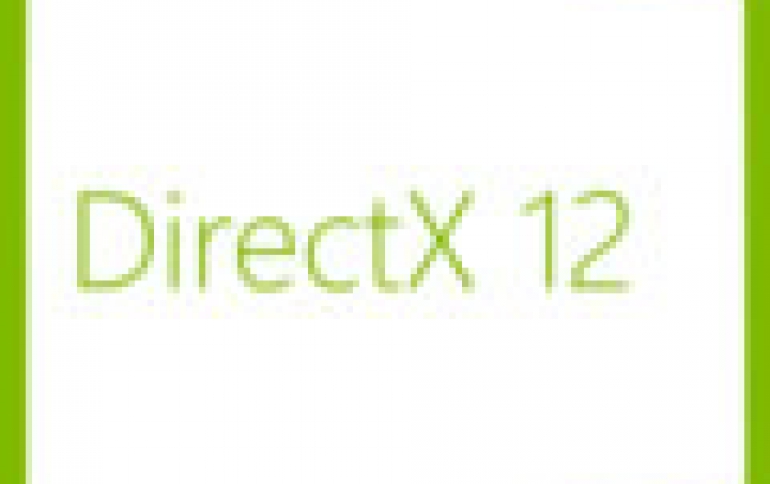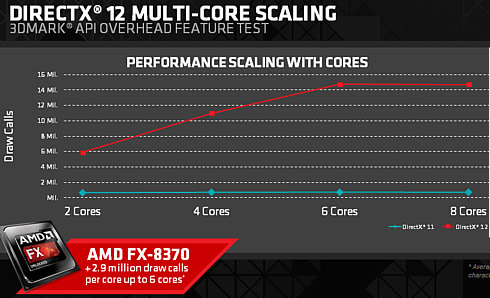
AMD Showcases DirectX 12 Performance in new 3DMark API Overhead Feature Test
3DMark producer Futuremark has developed a benchmarking routine to demonstrate the potential performance gains from the the Direct X API and AMD has put the new benchmark to the test. Futuremark's new 3DMark API Overhead feature test has been designed measuring differences in DirectX 12, DirectX 11 and Mantle API performance. The test renders a scene with an insane amount of onscreen objects using DirectX 11 in single-threaded mode, followed by DirectX 11 multi-threaded mode. Then it runs the same scene in DirectX 12.
AMD's team presented early results by comparing the DX12 performacne of the R9 290X and the R7 260X graphics cards. Despite the obvious marketing proposes of the presentation, it reamins pretty interesting.

With DirectX 12, the R9 290X handles about 16 times as many draw calls as it does under DirectX 11, while the R7 260X turns in about 9.5 times as many. A draw call happens when the CPU tells the GPU to draw an object on the screen. With more draw calls, a game engine can draw more objects, textures and effects to the screen.
Next AMD showed what DirectX 12 can do for the performance-per-watt of a PC. Using an AMD A-Series APU, we see a performance per watt improvement of 511%. In other words, every watt of power consumption just accomplished 6X the work that it could under DirectX 11.

Finally, AMD showed how much better DirectX 12 is at using multi-core CPUs like the AMD FX-8350. This improved use of such CPUs is due to a feature called multi-threaded command buffer recording, which finally allows a multi-core communication lane between your AMD FX processor and AMD Radeon GPU. The graph shows this clearly, with DirectX 11 demonstrating no benefit beyond two cores even while DirectX 12 sees an average uplift of +2.9 million draw calls with every CPU core added up to 6 cores.

It remains to be seen how these synthetic benchmark numbers will translate into real-world performance gains.





















